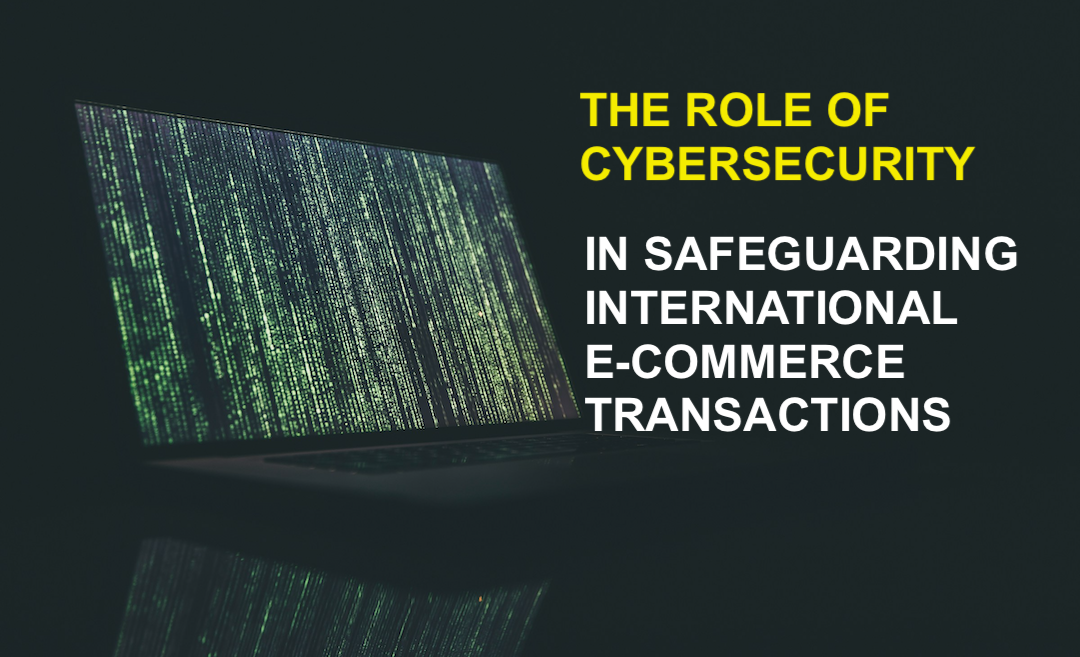
In the realm of international e-commerce, cybersecurity is the unsung hero working around the clock to keep our businesses safe. Think of it as the essential infrastructure that keeps the engines of global online trade humming, protecting money but also sensitive information.
This defense is critical because a security lapse can topple an enterprise. And despite what we may think, data breaches are pretty common. According to findings from a Duke University/CFO Magazine Global Business Outlook study, 80% of U.S. companies have had their systems successfully hacked. That means there’s a 4/5 chance the same could happen to you.
This article will teach you the role cybersecurity plays in keeping your international e-commerce transactions hack-free. We’ll also touch on key techniques that safeguard your business data.
The Role Cybersecurity Plays in International Transactions
Cybersecurity holds the reins when it comes to keeping international transactions secure. It's about much more than just guarding data. It's the linchpin in a global economy built on trust.
Encryption: The Secret Keeper
Stepping into international e-commerce means recognizing encryption as your silent security partner. It's the process that transforms sensitive details—think credit card numbers and personal info—into a secret code. Only those with the right key can decipher this data.
This ensures that as customer information travels across borders and through various networks, it remains locked tight against unauthorized access. Strong encryption acts as a shield for data integrity and privacy in cross-border transactions. Even if cyber thieves get their hands on encrypted data, all they have is a jumble of characters with no clear meaning.
For businesses looking to maintain trust with international customers, committing to robust encryption isn't just a smart idea. It's critical for survival in the digital marketplace.
Regulatory Compliance: Playing by International Rules
Navigating the regulatory landscape of international e-commerce is a bit like being an air traffic controller: you need to keep up with an ever-changing array of rules and regulations.
When it comes to the essentials of international fulfillment, compliance with these diverse sets of laws isn't just good practice—it's a cornerstone of your business operations.
From the General Data Protection Regulation (GDPR) in Europe to Asia-Pacific's evolving cross-border privacy rules, each policy adds a layer to the cybersecurity strategy that must be meticulously followed. This stringent adherence protects your company from costly fines but also signals to customers that their data is safe, no matter where they’re shopping from.
Multi-Factor Authentication: A Double-Check
Multi-factor authentication (MFA) is a straightforward yet powerful way to ramp up security in international e-commerce. Users might need to punch in a code from their phone or confirm with a fingerprint—extra hoops to jump through that prove they're the real deal.
In a marketplace without borders, these additional steps are crucial. They build an extra wall against cyber threats, especially if someone's password has been compromised. MFA has become as necessary as having a solid internet connection for your online business. It adds confidence to every transaction and can give you and your customers that extra peace of mind.
Continual Monitoring: The Watchful Eyes
Continual monitoring in the cyber world functions like a state-of-the-art alarm system for your international e-commerce platform. It's always on, scanning each byte of data that comes and goes, looking for anything out of the ordinary. Just as you'd want someone to keep an eye on your physical store around the clock, continual monitoring does this for your online space.
This relentless vigilance is crucial for catching threats early before they turn into emergencies. Whether it's a suspicious login attempt from halfway across the globe or an unusual pattern of transactions, having systems in place that can alert you makes all the difference.
Incident Response Planning: Bracing for Impact
Having an incident response plan in place is like wearing a seatbelt—it's the precaution you take, hoping you never need it, but it's vital for safety. In e-commerce, where cyber threats lurk everywhere, being prepared can make all the difference when something goes wrong.
Incident response planning lays out a clear roadmap for what to do, who to notify, and how to minimize damage if a breach occurs. It involves assembling a rapid-response team ready to spring into action at the first sign of trouble. This team works on restoring operations swiftly while preserving evidence for further investigation (which can help prevent future attacks).
Transparency with customers about what happened and how you're handling it also plays a key role in maintaining trust. These actions ensure that your business can withstand cyberattacks.
Conclusion
As you navigate the waters of international e-commerce, remember that cybersecurity is your companion that secures each transaction and builds trust with every customer interaction. Consider this your wake-up call to strengthen those digital defenses, embrace encryption, enforce multi-factor authentication, comply with regulations, and plan for future incidents.
Share this post
Leave a comment
All comments are moderated. Spammy and bot submitted comments are deleted. Please submit the comments that are helpful to others, and we'll approve your comments. A comment that includes outbound link will only be approved if the content is relevant to the topic, and has some value to our readers.

Comments (0)
No comment